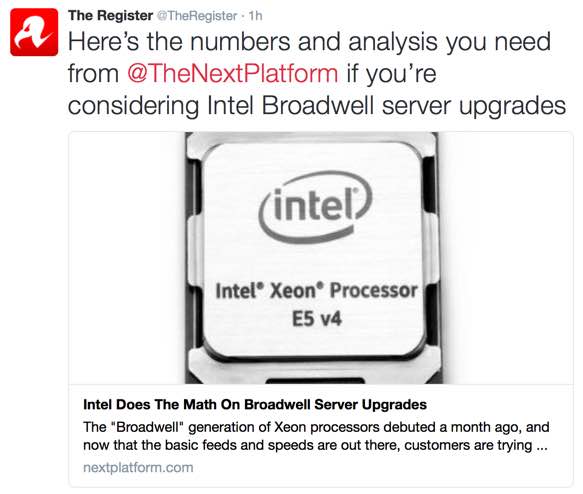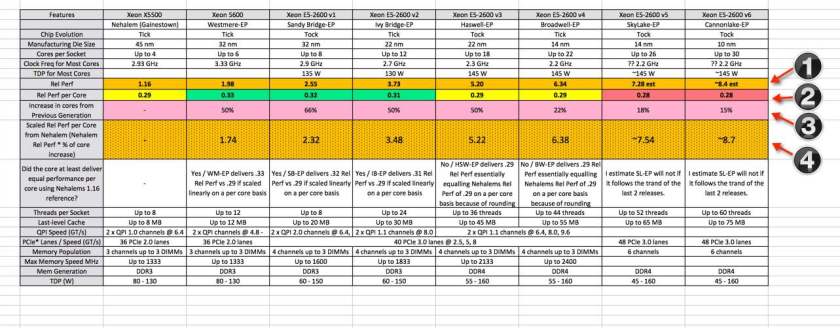Chaos that is Oracle
Clients are rapidly adopting open source technologies in support of purpose-built applications while also shifting portions of on-premises workloads to major Cloud providers like Amazon’s AWS, Microsoft’s Azure and IBM’s SoftLayer. These changes are sending Oracle’s licensing revenue into the tank forcing them to re-tool … I’m being kind saying it this way.
What do we see Oracle doing these days?
- Aggressively going after VMware environments who use Oracle Enterprise products for licensing infractions
- Pushing each of their clients toward Oracle’s public cloud
- Drastically changing how Oracle is licensed for Authorized Cloud Environments using Intel servers
- Latest evidence indicates they are set to abandon Solaris and SPARC technology
- On-going staff layoffs as they shift resources, priorities & funding from on-premises to cloud initiatives
VMware environments
I’ve previously discussed for running Oracle on Intel (vs IBM POWER), Intel & VMware have an Oracle problem. This was acknowledged by Chad Sakac, Dell EMC’s President Converged Division in his August 17, 2016 blog in what really amounted to an Open Letter to King Larry Ellison, himself. I doubt most businesses using Oracle with VMware & Intel servers fully understand the financial implications this has to their business. Allow me to paraphrase the essence of the note “Larry, take your boot off the necks of our people”.
This is a very contentious topic so I’ll not take a position but will try to briefly explain both sides. Oracle’s position is simple even though it is very complex. Oracle does not recognize VMware as an approved partitioning (view it as soft partitioning) method to limit Oracle licensing. As such, clients running Oracle in a VMware environment, regardless of how little or much is used, must properly license it for every Intel server under that clients Enterprise (assume vSphere 6+). They really do go beyond a rational argument IMHO. Since Oracle owns the software and authored the rules they use these subtleties to lean on clients extracting massive profits despite what the contract may say. An example that comes to mind is how Oracle suddenly changed licensing configurations for Oracle Standard Edition and Standard Edition One. They sunset both of these products as of December 31, 2015 replacing both with Standard Edition 2. What can only be described as screwing clients, they halved the number of sockets allowed on a server or in a RAC cluster, limited the number of cpu threads per DB instance while doubling the number of minimum Named User Plus (NUPs). On behalf of Larry, he apologizes to any 4 socket Oracle Standard Edition users but if you don’t convert to a 2 socket configuration (2 sockets for 1 server or 1 socket for 2 servers using RAC) then be prepared to license the server using the Oracle Enterprise Edition licensing model.
The Intel server vendors and VMware have a different interpretation on how Oracle should be licensed. I’ll boil their position down to using host or cpu affinity rules. House of Bricks published a paper that does a good job trying to defend Intel+VMware’s licensing position. In their effort, they do show how fragile of ground they sit on with its approach highlighting the risks businesses take if they hitch their wagons to HoB, VMware & at least Dell’s recommenations.
This picture, which I believe House of Bricks gets the credit for creating captures the Oracle licensing model for Intel+VMware environments quite well. When you pull your car into a parking garage – you expect to pay for 1 spot yet Oracle says you must pay for every one as you could technically park in any of them. VMware asserts you should only pay for a single floor at most because your vehicle may not be a compact car, may not have the clearance for all levels, there are reserved & handicapped spots which you can’t use. You get the idea.

It simply a disaster for any business to run Oracle on Intel servers. Oracle wins if you do not virtualize, running each on standalone servers. Oracle wins if you use VMware, regardless of how little or much you actually us. Be prepared to pay or to litigate!
Oracle and the “Cloud”
This topic is more difficult to provide sources so I’ll just stick to anecdotal evidence. Take it or leave it. At contract renewal, adding products to contracts or new projects like migrating JD Edwards “World” to “Enterprise One” or a new Oracle EBS deployment would subject a business to an offer like this. “Listen Bob, you can buy 1000 licenses of XYZ for $10M or you can buy 750 licenses of XYZ for $6M, buy 400 Cloud units for $3M and we will generously throw in 250 licenses …. you’ll still have to pay support of course. You won’t get a better deal Bob, act now!”. Yes, Oracle is willing to take a hit for the on-premises license revenue while bolstering their cloud sales by simply shuffling the Titanic deck chairs. These clients, for the most part are not interested in the Oracle cloud and will never use it other than to get a better deal during negotiations. Oracle then reports to Wall Street they are having tremendous cloud growth. Just google “oracle cloud fake bookings” to read plenty of evidence to support this.
Licensing in the Cloud
Leave it to Oracle Marketing to find a way to get even deeper into clients wallets – congratulations they’ve found a new way in the “Cloud”. Oracle charges at least 2X more with Oracle licenses on Intel servers that run in Authorized Cloud Environments (ACE). You do not license Oracle in the cloud using the on-premises licensing factor table. The more VM’s running in a ACE, the more you will pay vs an on-premises deployment. To properly license an on-premises Intel server (remember, it is always an underlying proof that Oracle on POWER servers is the best solution) regardless if virtualization is used, assuming a 40 core server, would equal 20 Oracle Licenses (Intel licensing factor for Intel servers is 0.5 per core). Assume 1 VMware server, ignoring it is probably part of a larger vSphere cluster. Once licensed, clients using VMware could theorectially run Oracle as many VM’s as desired or supported by that server. Over-provision the hell out of it – doesn’t matter. That same workload in an ACE, you pay for what amounts to every core. Remember, if the core resides on-premises it is 1 Oracle License for every 2 Intel cores but in a ACE it is 1 OL for 1 core.
AWS
Putting your Oracle workload in the cloud? Oracle license rules stipulate if running in AWS, it labels as vCPU’s both the physical core and the hyperthread. Thus, 2 vCPU = 1 Oracle License (OL). Using the same 40 core Intel server mentioned above, with hyperthreading it would be 80 threads or 80 vCPU. Using Oracle’s new Cloud licensing guidelines, that would be 40 OL. If this same server was on-premises, those 40 physical cores (regardless of threads) would be 20 OL ….. do you see it? The licensing is double!!! If your AWS vCPU consumption is less vs the on-premises consumption you may be ok. As soon as your consumption goes above that point – well, break out your checkbook. Let your imagination run wild thinking of the scenarios where you will pay for more licenses in the cloud vs on-prem.
Azure
Since Azure does not use hyperthreading, 1 vCPU = 1 core. The licensing method for ACE’s for Azure or any other ACE if hyperthreading is not used, 1 vCPU = 1 OL. If a workload requires 4 vCPU, it requires 4 OL vs the 2 OL if it was on-premises.
Three excellent references to review. The first is Oracle’s Cloud licensing document. The second link is an article by Silicon Angle giving their take of this change and the last link is for a blog by Tim Hall, a DBA and Oracle ACE Director sharing his concerns. Just search for this topic starting from January 2017 and read until you fall asleep.
Oracle
Oracle offers their own cloud and as you might imagine, they do everything they can to favor their own cloud thru licensing, contract negotiations and other means. From SaaS, IaaS and PaaS their marketing machine says they are second to none whether the competition is SalesForce, Workday, AWS, Azure or any other. Of course, analysts, media, the internet nor Oracle earnings reports show they are having any meaningful success – to the degree they claim.
Most recently, Oracle gained attention for updating how clients can license Oracle products in ACE’s as mentioned above. As you might imagine, Oracle licenses its products slightly differently than in competitors clouds but they still penalize Intel and even SPARC clients, who they’ll try to migrate into the cloud running Intel (since it appears Oracle is abandoning SPARC). The Oracle Cloud offers clients access to its products on a hourly or monthly in a metered and non-metered format on up to 4 different levels of software. Focusing on Oracle DB, the general tiers are Standard, Enterprise, High-Performance and Extreme-Performance Packages. Think of it like Oracle Standard Edition, Enterprise Edition, EE+tools, EE+RAC+tools. Oracle also defines the hardware tier as “Compute Shapes“. The three tiers are General Purpose, High-Memory or Dedicated compute
Comparing the cost of an on-premises perpetual license for Oracle Enterprise vs a non-metered monthly license for the Enterprise Tier means they both use Oracle Enterprise Edition Database. Remember a perpetual license is a one-time purchase, $47,500 for EE DB list price plus 22% per year annual maintenance. The Enterprise tier using a High-memory compute shape in the Oracle cloud is $2325 per month. This compute shape consists of 1 OCPU (Oracle CPU) or 2 vCPU (2 threads / 1 core). Yes, just like AWS and Azure, Intel licensing is at best 1.0 vs 0.5 for on-premises licensing per core. Depending how a server might be over-provisioned as well as the fact an on-premises server would be fully licensed with 1/2 of its installed cores there are a couple of ways clients will vastly overpay for Oracle products in any cloud.
The break-even point for a perpetual license + support vs a non-metered Enterprise using High-memory compute shape is 30 months.
- Perpetual license
- 1 x Oracle EE DB license = $47,500
- 22% annual maintenance = $10,450
- 3 year cost: $78,850
- Oracle Cloud – non-metered Enterprise using High-Memory shape
- 1 x OCPU for Enterprise Package for High-Compute = $2325/mo
- 1 year cloud cost = $27,900
- 36 month cost: $83,700
- Cross-over point is at 30 months
- $79,050 is the 30 month cost in the Cloud
- An Oracle Cloud license becomes significantly more expensive after this.
- year 4 for a perpetual license would be $10,470
- 12 months in year 4 for the Cloud license would be $27,900
- Annual cost increase for a single cloud license over the perpetual license = $17,430
- Please make your checks payable to “Larry Ellison”
Oracle revenue’s continue to decline as clients move to purpose-built NoSQL solutions such as MongoDB, RedisLabs, Neo4j, OrientDB, Couchbase as well as SQL based solutions from MariaDB, PostgreSQL (I like EnterpriseDB) even DB2 is a far better value. Oracle’s idea isn’t to re-tool by innovating, listening to clients to move with the market. No, they get out their big stick – follow the classic mistake so many great clients have done before them which is not evolve while pushing clients until something breaks. Yes, Boot Hill is full of dead technology companies who failed to innovate and adapt. This is why Oracle is in complete chaos. Clients beware – you are on their radar!






